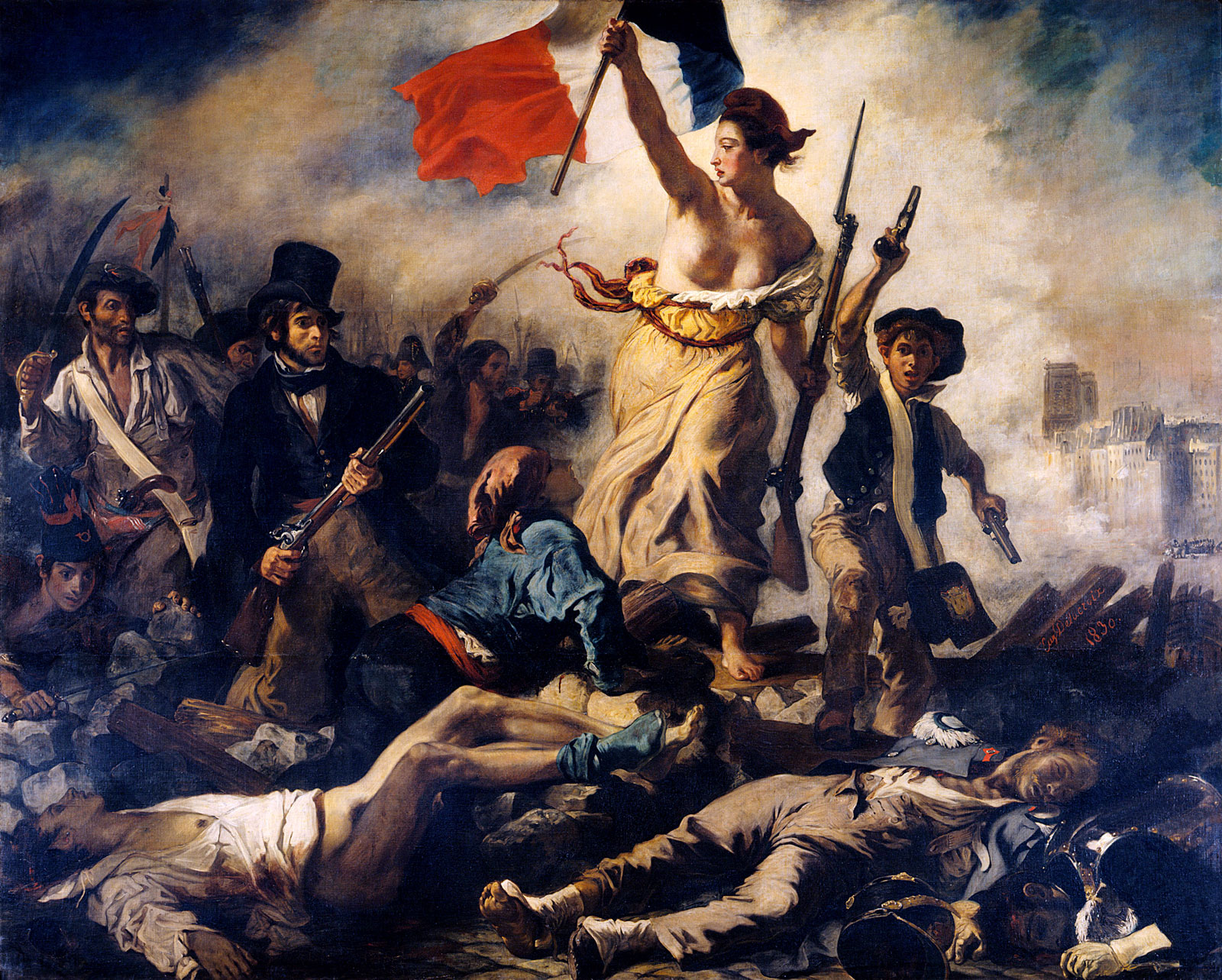The virtual dictator of European painting during the first two decades of the nineteenth century was the French neoclassicist Jacques Louis David (1748-1825). David became a baron and court painter under Napoleon, then was exiled by the restored Bourbons. No matter how revolutionary the subject, David employed traditional neoclassical techniques, stressing form, line, and perspective.
The works of the Spaniard Francisco de Goya (1746-1828) were much closer to the romantic temper, with their warmth, passion, and sense of outrage. No one could have any illusions about Spanish royalty after looking at Goya’s revealing portraits of Charles III and his successors.
Romantic painting did not acquire formal recognition until an official Paris exhibition in 1824. Although many of the pictures shown there came from the school of David, two leaders of romantic painting were also represented—the Englishman John Constable (1776-1837) and the Frenchman Eugene Delacroix (1798-1863). Constable took painting out of the studio, studied nature afresh, and produced landscapes that stressed light and color more than classical purity of line, thus paving the way for the impressionists of the later nineteenth century.
Even more influential was J. M. W. Turner (1775-1851), precursor of the impressionists, who developed British landscape painting to the heights of the sublime and romantic. Delacroix, too, championed color and light and urged young painters to study the flamboyant canvases of Rubens, whom David had banished from the ranks of acceptable artists. The purpose of art, Delacroix claimed, was “not to imitate nature but to strike the imagination.” By the 1830s French painters were divided into opposing schools: the still-influential disciples of David and the romantic followers of Delacroix.
In architecture also two schools flourished during the first half of the nineteenth century: the neoclassical, looking to Greek and Roman antiquity, and the neo-Gothic or Gothic revival, looking to the Middle Ages. Many architects of the early 1800s mastered both styles, not so much copying ancient or medieval structures as adapting them to the needs and tastes of the day. Generally, basic design was classical in its proportions, while decoration was medieval. The Houses of Parliament in London were Gothic in their spires and towers, but they also embodied classical principles of balance and symmetry.
At the beginning of the nineteenth century the Roman vogue, firmly set by the French Revolution, reached its peak in Napoleonic Paris with triumphal arches, columns, and churches patterned after Roman forms. In America Thomas Jefferson, who was a gifted designer, provided the University of Virginia with distinguished academic buildings focused on a circular library derived from the Roman Pantheon (the perfect example of “spherical” architecture). Yet by the second quarter of the nineteenth century neo-Roman was yielding to Greek revival, stirred in part by a wave of enthusiasm for the Greek independence movement.

